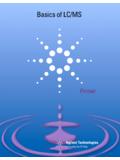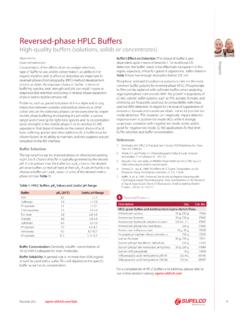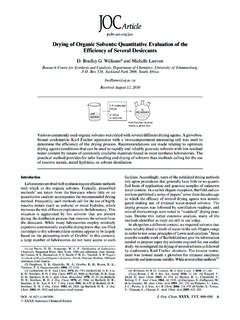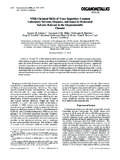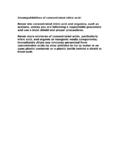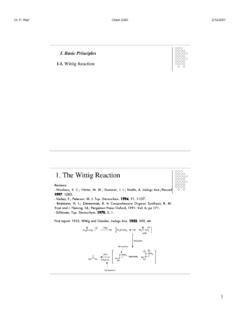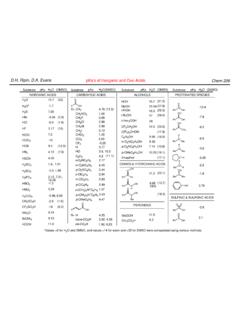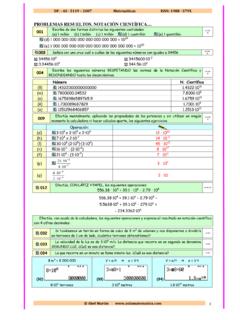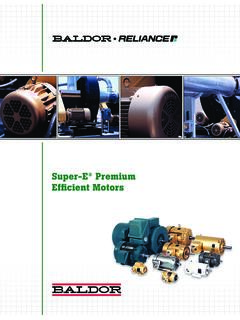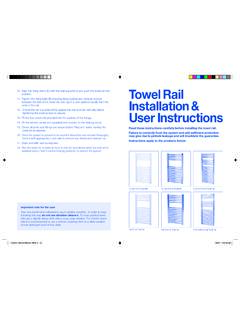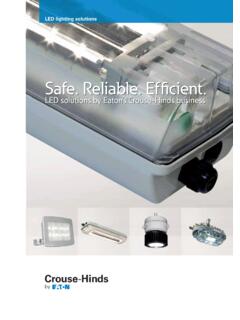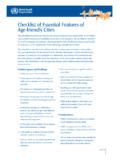Transcription of E cient Conversion of HPLC Instruments between Normal ...
1 6 Liquid ORDER: 800-247-6628 (US ONLY ) / 814-359-3441 Reporter ! cient Conversion of hplc Instruments between Normal -Phase and Reversed-Phase SolventsRichard Henry and Carmen T. reversed-phase (RP) hplc is still by far the most common mode, Normal -phase (NP) hplc is increasing in popularity with the introduction of new highly polar columns with excellent retention, selectivity and stability. It is easy to inter-convert between RP and HILIC (a type of NP) because both modes employ polar aqueous mobile phases; however, many compounds are not polar enough to be retained under aqueous HILIC conditions. When aqueous solvents must be replaced with non-aqueous conditions to study non-polar samples, immiscibility situations can arise during often contact our Technical Service Department with a practical question that might go something like, I need to change my hplc instrument from RP mode to NP mode.
2 Do you have any suggestions or guidelines for such a changeover? This article describes our best practices for converting between reversed-phase and Normal phase solvents, which are often !rst best practice is to dedicate Instruments to a speci!c mode. Signi!cant seal wear-and-tear can be caused by expansion, contraction and extra friction of changing solvents. If possible, columns should also be dedicated to one mode for trouble-free operation. If dedicating the instrument or column is not possible, one should use the following regular practice is to replace the column with tubing or a union and "ush extensively with isopropanol (IPA) before going over to water or hydrocarbon. Before beginning the changeover process, remove the hplc column, cap and store in the appropriate storage solvent unless the same column is to be used in the new mode.
3 Columns such as Cyano and Fluorophenyl (F5) can work in either RP or NP mode and can remain installed if desired. After IPA "ush, the column can be removed and capped to avoid excessive wear on the valuable component. In the "ushing steps, be sure to include the entire "uid path (pump, autosampler, valves, detector, etc.). Also, include the sample loop and any other "uid paths that are encountered for the Normal operation of making injections. This can vary considerably depending on whether the autosampler is an external loop design, or an internal loop design. As part of all the washes, make certain the injection needle gets washed as well. It is best to do several full loop injections of a solvent such as IPA that is miscible with both high aqueous and high organic mobile phases. The total volume of IPA needed will vary with instrument design, but the waste volume should be monitored (record the volume as a guide for future changeovers) and observed for uniform appearance.
4 UV detectors may remain on (ca. 250 nm) during this step to indicate when the system has returned to a stable second wash step after the IPA should be with methanol (or ethanol). Follow the previous procedure that was used for the IPA wash before going to water. Methanol will help "ush the IPA out faster than going directly from IPA to water. If excessive baseline noise or drift is observed with a UV detector, repeat the procedures and allow more time to "ush out any poorly swept "ow 1. Properties of Organic Solvents Commonly Used in hplc Miscible with UV Refractive Index Solvent Strength ViscositySolvent Polarity Water? Cuto!* at 20 C e (silica) at 20 C, C PHexane nonpolar no 200 no 200 tetrachloride no 263 no 245 chloride no 235 yes 215 ether no 215 yes 330 acetate poorly 260 yes 215 yes 190 yes 210 yes 205 polar yes - > * typical ChromatographyReporter !
5 Incomplete mixing shows up as severe detector baseline noise or pressure "uctuations (globules of immiscible solvent can resemble bubbles or particles).! Do "ush detectors and all other components even if baseline is not monitored.! Total time for changeover can vary but should take about an hour. Do not rush; this may actually slow down the process.! Do record the volumes of solvent used during changeover for use as a future guide; if changeover is unsuccessful, use more solvent the next time.! Don t expect fast changeover and baseline equilibration with refractive index detectors- they are extremely slow to equili-brate after changeover. ! Do check gradient blank runs for excessive baseline noise and drift that might indicate pockets of immiscible solvent.! Good chromatography in the target mode is the most sensitive !
6 Nal test- start with simple binary mobile phases and standard test mixes and work toward real samples with mobile phase , it is also good practice to contact your LC instrument manufacturer to be sure all details of the changeover are covered. The manufacturer may have additional details and tips for successful changeover to a di#erent chromatographic mode. If columns and Instruments are frequently used in di#erent modes, adopt a labeling system to alert a new user about possible solvent compatibility Dos and Don ts for Solvent Changeover:!Do remove all additives and start with 100% isopropanol in all reservoirs.! Isopropanol is fully miscible with all common solvents and is the safest changeover solvent for either direction.!Do use low "ow - about half of Normal to avoid excessive seal wear and damage due to over-pressuring.
7 ! Don t use acetonitrile routinely as the changeover solvent- it is better than methanol, but is not fully miscible with pure hydrocarbons.!Don t use methanol routinely as the organic- it is not fully miscible with many Normal phase conditions.! Either acetonitrile or methanol may be used to routinely change from reversed-phase and back (remember to remove additives).!Do check miscibility (use small external vessel) with target mobile phase before starting, especially if IPA is not selected.! Do use organic (such as IPA) in all lines of a gradient instru-ment to make certain that water or hydrocarbon is removed from all "uid areas.!Do operate the injector valve and any other selector valves while doing the IPA "ush procedure. ! Do monitor pressure and detector signals during changeover as these are excellent methods to con!
8 Rm full system equili-bration; evaporative detectors such as MS and ELSD cannot be used for this the Great hplc Brands Under One Roof! Supelco ! TSK (Tosoh) ! Kromasil ! Hamilton ! Upchurch ! Rheodyne ! Spherisorb and more .. Find the products you need, including pricing and availability at any of these products at a 20% Discount through Dec 31, 2010. (Supelco and TSK not included)Specify Promo Code 425 when ordering.
